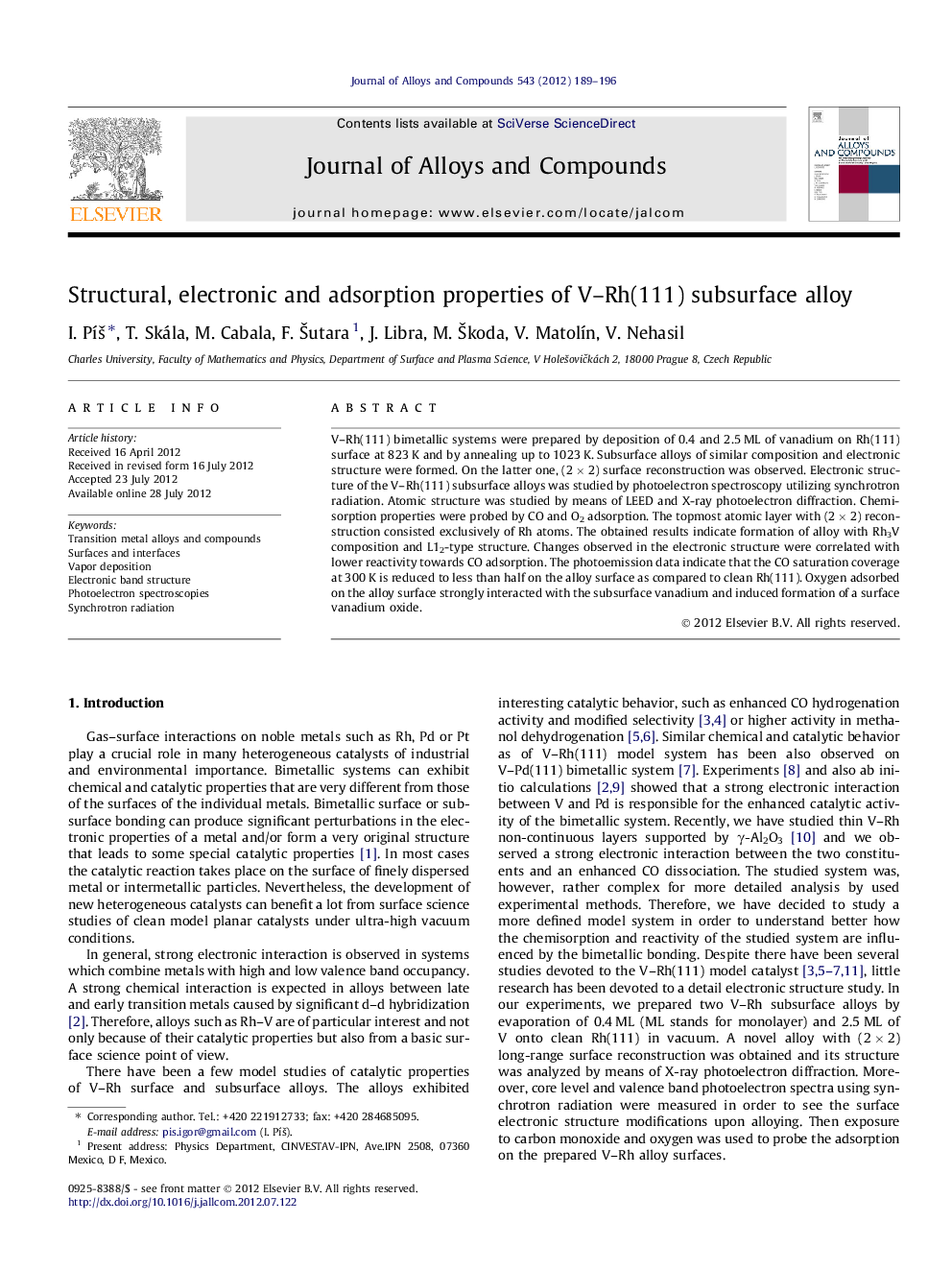| Article ID | Journal | Published Year | Pages | File Type |
|---|---|---|---|---|
| 1615579 | Journal of Alloys and Compounds | 2012 | 8 Pages |
V–Rh(111) bimetallic systems were prepared by deposition of 0.4 and 2.5 ML of vanadium on Rh(111) surface at 823 K and by annealing up to 1023 K. Subsurface alloys of similar composition and electronic structure were formed. On the latter one, (2 × 2) surface reconstruction was observed. Electronic structure of the V–Rh(111) subsurface alloys was studied by photoelectron spectroscopy utilizing synchrotron radiation. Atomic structure was studied by means of LEED and X-ray photoelectron diffraction. Chemisorption properties were probed by CO and O2 adsorption. The topmost atomic layer with (2 × 2) reconstruction consisted exclusively of Rh atoms. The obtained results indicate formation of alloy with Rh3V composition and L12-type structure. Changes observed in the electronic structure were correlated with lower reactivity towards CO adsorption. The photoemission data indicate that the CO saturation coverage at 300 K is reduced to less than half on the alloy surface as compared to clean Rh(111). Oxygen adsorbed on the alloy surface strongly interacted with the subsurface vanadium and induced formation of a surface vanadium oxide.
► V–Rh(111) subsurface alloy with (2 × 2) surface reconstruction was prepared. ► Substitutional alloy with Rh3V composition and L12 structure was formed. ► Decreased density of states at the Fermi edge was observed upon alloying. ► Electronic changes were correlated with lower reactivity towards CO adsorption. ► Oxygen adsorbed on the surface reacted with the subsurface vanadium.
